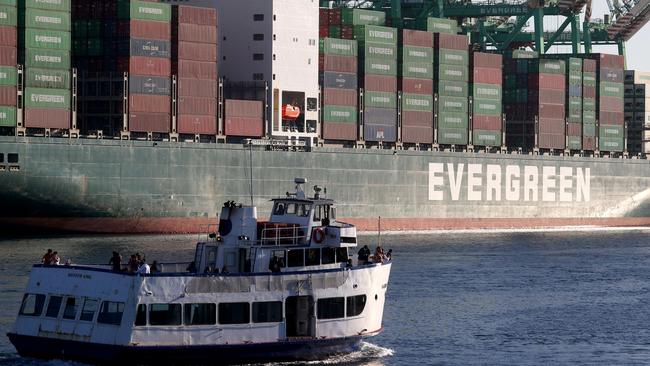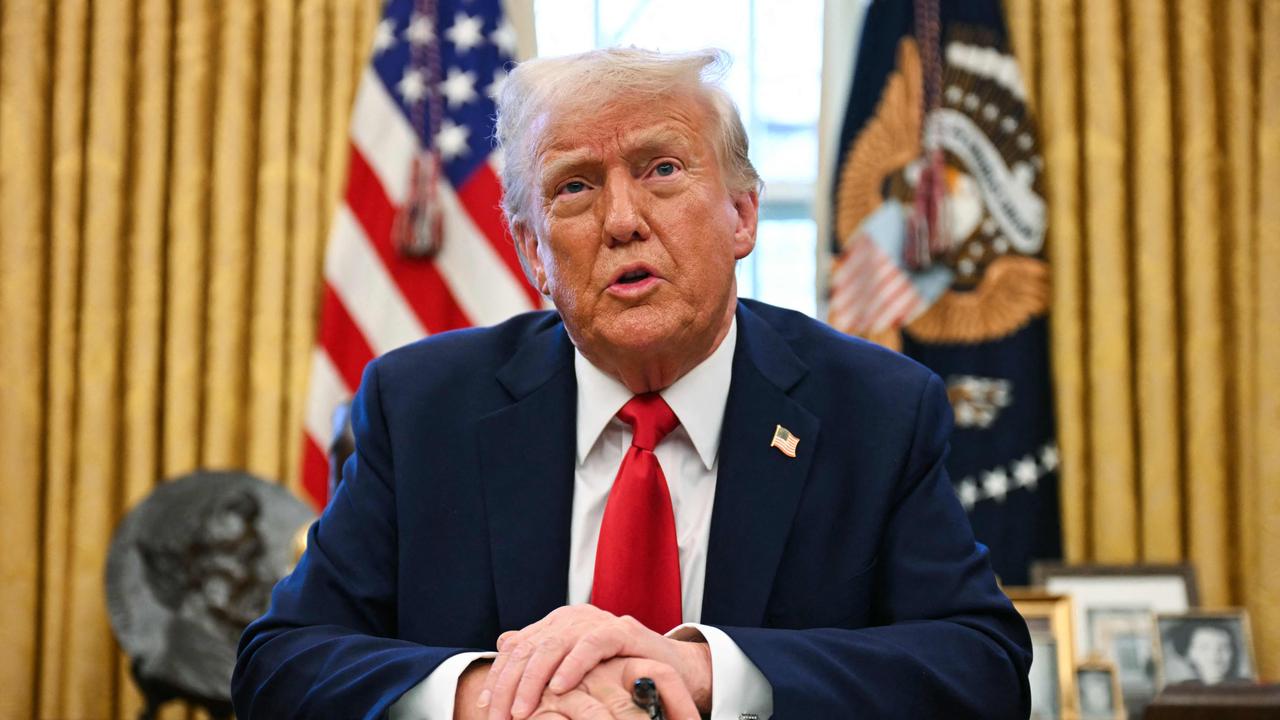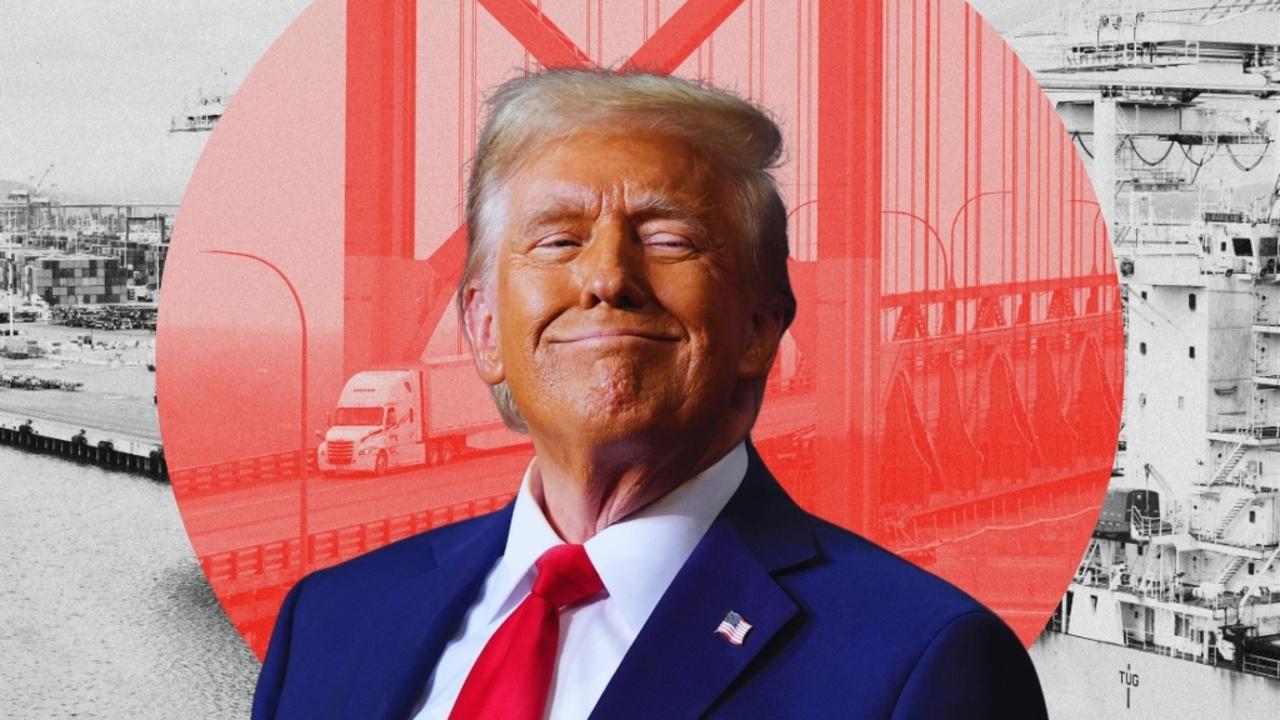How sanctions on Russia, war in Ukraine and Covid in China are transforming global supply chains
A new world order is emerging for the vital supply chains that deliver most of the goods we rely on for our daily existence.

A new world order is emerging for the vital supply chains that deliver most of the goods we rely on for our daily existence.
Companies, especially tech companies, are questioning the orthodoxies of the past 50 years of globalisation.
Those orthodoxies include always seeking out the lowest-cost manufacturer, no matter how distant, and never carrying surplus inventory or parts. The results of the shift currently under way could include the movement of jobs and manufacturing representing hundreds of billions of dollars in economic activity in the decades to come.
As companies build more factories, in more locations, and buy parts and materials from a greater diversity of suppliers, the world’s supply chains are becoming more like supply webs.
Modern supply chains were designed to be cost-effective, but not necessarily resilient.
Ever since the adoption of the shipping container in the 1960s, supply chains for most goods have grown ever longer. Making transoceanic and transcontinental shipping cheap and reliable meant manufacturing could move to wherever wages were lowest.
This, in turn, meant most factories moved to the opposite side of the world, principally to China. But it also meant, especially for complicated tech like smartphones and computers, that as materials were synthesised into parts, and then subcomponents and finally finished products, they might crisscross the world multiple times.
Gadgets, which tend to have more parts sourced from more places than almost anything save automobiles and complicated industrial equipment, have turned out to be especially dependent on three features of global trade that were, until just a few years ago, taken for granted.
The first is that raw materials would always be cheap and widely available. The second, that shipping would always cost a fraction of the value of the goods being moved. The third was that this shipping would always be reliable.
The US-China trade war beginning in 2018 made it apparent to many manufacturers that these assumptions might not hold true. Then the Covid-19 pandemic drove home the point. Now, sanctions against Russia, the continuation of the trade war with China, natural disasters and the production and shipping capacity knocked out by the invasion of Ukraine appear to be making issues with globalised supply chains chronic.
For many companies, the pandemic-fuelled pause in globalisation is turning into a broad effort to figure out how to make supply chains more robust by adding more factories, suppliers and sources of materials. It isn’t deglobalisation by any stretch, but it is an expensive and time-consuming reshuffling of where things are made.
All those materials and goods still have to come from somewhere. In logistics, this shift from supply chains to webs is known as “multiple sourcing”, says Nathan Resnick, president and co-founder of Sourcify, which helps businesses find and manage factories in Asia.
It has long been standard practice to have more than one supplier for goods and parts in a supply chain, but beginning with the most recent trade wars, more companies, even small and medium-size ones, have been forced to do the hard work of setting up more factories and synchronising the quality of goods across them, he says.
Willy Shih is a professor at Harvard University and a member of a committee advising the US Commerce Department on how to shore up domestic supply chains. In a recent essay, he described how the pandemic has been a wake-up call for managers, and how the world seems to be moving toward companies and countries figuring out how to relocate supply chains within regional trading blocs of politically allied countries.
At the same time that companies are recognising their vulnerability to supply disruptions, governments also are focusing more on safeguarding access to key goods for national-security reasons.
These policies go by many names. In China, this move toward self-reliance is known as ” dual circulation”. It was announced in May 2020, in the country’s 14th five-year plan. In the European Union, the portion of this philosophy that deals with tech has been christened “Technological Sovereignty”.
In the US, legislation, executive orders, and rule making by the Commerce Department is aimed at shoring up domestic supply chains. These efforts include the $US52 billion ($69bn) Chips for America Act, passed but not yet funded, aimed at bringing microchip manufacturing back to the US. The goal is to reverse a decades-long trend that has reduced the US share of global chip manufacturing to less than 12 per cent from about 40 per cent in 1990.
Bringing tech home
With demand for microchips growing so quickly that chip makers can’t keep up, manufacturers aren’t waiting on the Chips Act. They’ve announced a spate of new factories, scattered around the world. Taiwan Semiconductor Manufacturing, or TSMC, maker of nearly all the latest-generation chips in Apple’s products, is spending $US100bn over the next three years to increase its capacity, including new factories in Arizona and Japan.
Intel has pledged to spend $US95bn on new manufacturing capacity in Europe alone, and $US20bn on a new factory in Ohio that could eventually grow to a $100 billion investment. Samsung plans a new $US17bn facility in Texas. Even makers of chips using older technology, like Texas Instruments and On Semiconductor — companies that remain critical for automobiles and appliances and for mundane functions in some advanced gadgets — are splurging on new and expanded factories.
Encouraging these investments has become a rare spot of bipartisanship in Washington, with many in both the Democratic and Republican parties taking the view that subsidising economically important industries like chip manufacturing is also important for national security.
H.R. McMaster, former national security adviser in the Trump administration, this past week called funding of the Chips Act “absolutely critical”.
The current global situation, where countries are lining up in expansive geopolitical alliances separated by trade wars and actual wars, is reminiscent of the Cold War and even World War II, says Klon Kitchen, a senior fellow specialising in technology and national security at the conservative-leaning American Enterprise Institute.
In the event of escalated tensions between the US and its allies and Russia, China, or other allied nations, the US cannot afford to lose access to advanced microchips and the other parts and manufacturing required to build everything from weapons systems to smartphones and 5G networks, he adds.
Currently, almost all of the world’s advanced microchip manufacturing is concentrated in Taiwan, a self-ruled island democracy of 24 million people 160km off the coast of mainland China, which China’s Communist government has long claimed and vows to recapture.
This situation represents “an extreme concentration which should make us worried”, says Emily Kilcrease, director of the energy, economics and security program at the Centre for a New American Security, a Washington think tank that in the late 2000s supplied talent to the Obama administration. “But it makes us extra-nervous that it’s in such a geopolitically fraught location, given China and Taiwan tensions.”
Regional manufacturing
Computer chips are hardly the only kind of tech for which supply chains are being transformed into multisource supply webs.
Manufacturing of batteries, especially for electric vehicles, is currently dominated by China. But dozens of new ” gigafactories” for EV batteries are going up all over the US and the world — basically, just about anywhere there is a robust automobile-manufacturing infrastructure.
The iPhone, that icon of the world’s longest and most complicated supply chains, continues to arrive on time in part because of coordination of Apple and Foxconn, its main contract manufacturer. Even before the pandemic, Foxconn took advantage of generous subsidies to redistribute manufacturing of the iPhone, splitting production of the device and many others that it makes between Shenzhen and western China, says Dr Shih. Foxconn has also expanded manufacturing of the iPhone to Chennai, India, and of AirPods to Vietnam.
Southeast Asia in particular has become a hotbed of regional “nearsourcing” of tech manufacturing. (Nearsourcing is when manufacturing is set up in countries close to where an item is consumed or where final assembly takes place — a classic example is when US companies move manufacturing to Mexico from China.)
In Southeast Asia, whole Chinese factories are copied and dropped into countries like Vietnam and Thailand, which remain close to parts and materials that are still manufactured in China, but where labour costs are lower. Samsung Electronics, for example, makes the majority of its smartphones in Vietnam, as well as its smart appliances.
With most countries in Southeast Asia attempting to maintain geopolitical neutrality, the region has the potential to remain a supplier to pretty much every nation in the world, says Dr Shih. That won’t stop companies from trying to copy some elements of what is currently accomplished in this region — like the packaging of microchips, a step that comes after their manufacture, in the US and Europe. The result could be regional manufacturing, where countries try to assure that, even if they don’t make something themselves, they can source it from an ally, he adds.
Even if Americans wanted to, trying to reproduce the whole of electronics supply chains in the US, from raw materials to finished goods, would be extraordinarily difficult, if not impossible, says Lauren Dudley, a research analyst focused on competition with China at Rhodium Group, a New York-based economic-research firm.
America may have at one point or another made almost all of the components that go into modern gadgets, but a great deal of that knowledge has been lost, as factories were shipped overseas, engineers and technicians retired, and no one was trained to take their places, says Dr Shih.
Some people who study supply chains and webs say the current shift risks going too far. Trying to achieve in the US something like EU officials’ goal of tech sovereignty would be a mistake, says Ms Kilcrease.
While it makes sense for chips and electronics that will go into defence systems to be made in the US, that remains a tiny fraction of the total that are manufactured every year.
“We should not forget the lessons we learned about how really complex globalised supply chains can lead to innovation,” she adds.
Whatever investments companies and governments make, nothing in a world-spanning system of manufacturing and delivery of goods changes quickly. Reordering decades of globalisation, moving both factories and the expertise required to run them, is a Herculean task requiring a great deal of money — and time.
“To have this decoupling that a lot of people talk about, you are talking about a decades-long project,” says Dr Shih. “You really have to have a lot of commitment.”
The Wall Street Journal


